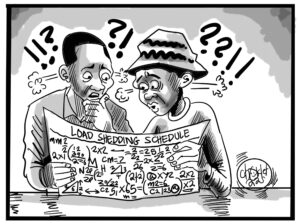Interest rates on loan facilities offered by commercial banks will hit a nominal average of 25 per cent following the Bank of Zambia’s (BoZ) increased Monetary Policy Rate (MPR), says the Bankers’ Association of Zambia (BAZ).
And the Bankers’ Association say commercial banks may slow down lending to the private sector, partly on account of government’s delayed dismantling of outstanding arrears owed to suppliers and contractors.
Meanwhile, the Non-Performing Loans (NPLs) ratio has marginally improved to an industry average of 10 per cent by March 31, 2019, from 13 per cent one year prior, BAZ data shows.
In an interview, BAZ chief executive officer Leonard Mwanza explained that interest rates on loan facilities offered by commercial banks will now increase to a nominal average of 25 per cent from 24.6 per cent recorded by the end of the first quarter of this year following the BoZ’s increased MPR effected last month.
The central bank hiked the MPR to 10.25 per cent from 9.75 per cent, representing 50 basis points, the first time in over a year, in a bid to contain rising inflationary pressures.
“For a while, interest rates have been static; there is a variation between 23 to 24 per cent, and if we take out the outliers, interest rates have been somewhere around 21-22 per cent for corporates. With this marginal (MPR) adjustment, interest rates have now pushed to 25 per cent thereabouts,” Mwanza said.
“So, the 50 basis points has translated into an increase in interest rates by at least 50 basis points. So, all the commercial banks are busy advising their clients that, interest rates that are fixed to the MPR have now been increased by 50 basis points. So, it is a fluctuation that will always be there depending on where the MPR sits.”
He, however, commended the BoZ’s Monetary Policy Committee (MPC) for a “fair and marginal” increase in its MPR amidst rising inflationary pressures.
“Despite the pressure on inflation going beyond the target (6-8 per cent) range and other issues, the MPC really tried to make sure that the adjustment was fair and marginal because they needed to take care of the fact that, if there was an immediate spike on lending rates, it was going to affect the general economy in terms of productivity,” he observed.
“But it’s also a statement that if the (inflationary) pressure continues, they will keep on adjusting (the MPR).”
And Mwanza added that commercial banks may slow down lending to the private sector, partly on account of government’s delayed dismantling of outstanding arrears owed to suppliers and contractors.
Government’s domestic arrears owed to suppliers and contractors currently stands at an unprecedented K15.6 billion from K15.1 billion by the end of last year.
“Lending will still continue, but where there are sectoral risks coming out, definitely, we expect that, at that point in time, banks may sit back and wait for the situation to improve. The arrears have been there for quite some time, but the indication was that, there was an increase in lending in the first quarter (of 2019). But whether that will be sustained is dependent on arrears, liquidity issues and the increase in interest rates,” Mwanza, a former Natsave managing director, explained.
Meanwhile, Mwanza announced that the NPLs ratio had marginally improved to 10 per cent by the end of the first quarter of this year, from 13 per cent in the corresponding period last year.
He, however, noted that the improvement was still not good enough.
“They were around 10 per cent, which is an improvement from the figure a year ago of around 13 per cent. So, there’s been some significant improvement in terms of NPLs, generally, in the industry from the first quarter analysis. So, we are just at the limit, not good enough, but just at the permissible maximum limit of 10 per cent; one would want to see it (the NPL ratio) drop further,” said Mwanza.


















